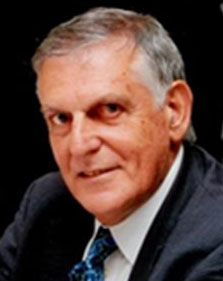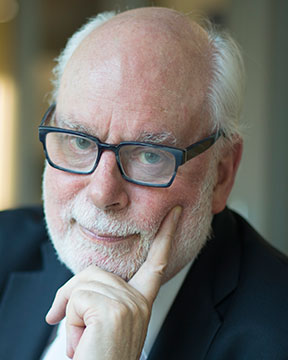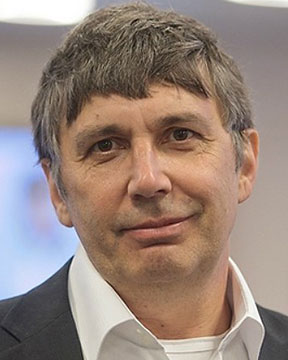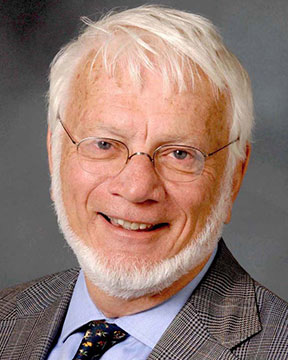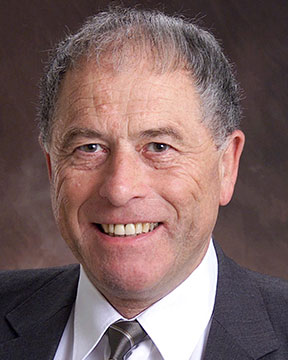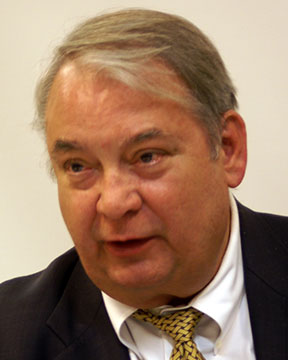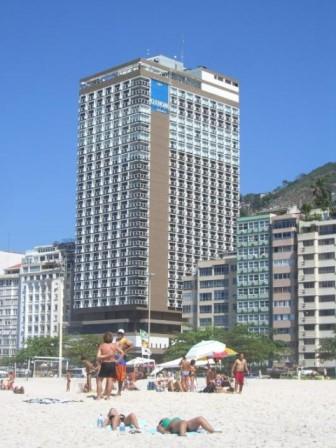ORALS
SESSION: SISAMMonPM1-R5
Current Intelligent Sustainable Advanced Materials like Graphene, CNTs, High Entropy Alloys | Zehetbauer International Symposium on Science of Intelligent and Sustainable Advanced Materials (4th Intl. Symp. on Science of Intelligent and Sustainable Advanced Materials (SISAM)) |
| Mon Nov, 5 2018 / Room: Copacabana A (150/1st) | |
| Session Chairs: Yuntian Zhu; Session Monitor: TBA |
14:50: [SISAMMonPM107] Keynote
Dislocation Mediated Plasticity During the Deformation of Semicrystalline Polymers Florian
Spieckermann1 ; Harald
Wilhelm
2 ; Gerald
Polt
3 ; Mohammad
Zareghomsheh
3 ;
Michael J.
Zehetbauer4 ;
1University of Leoben, Leoben, Austria;
2Vienna University of Technology and Plastics Technology Institute LKT-TGM, Wien, Austria;
3University of Vienna, 1090, Austria;
4University of Vienna, Wien, Austria;
Paper Id: 132
[Abstract] Although semicrystalline polymers have become increasingly important for technological applications in the past decades, the micromechanical processes on an atomistic scale occurring during plastic deformation are still a matter of dispute [1]. As an example, this concerns the question whether dislocations in the crystalline phase play a role for the macroscopic strength or not [2]. Based on dedicated experimental methods such Multiple X-ray Line Profile Analysis (MXPA), which allows the verification of the presence of dislocations and their quantification [3-6], and nano-creep experiments, as a mechanical probe for dislocation mediated plasticity with sub-nanometer resolution [7], we discuss recent findings on the molecular processes governing the plasticity of semicrystalline polymers. Special emphasis is given to the generation, mobility, and thermal activation of dislocations in particular, and crystallographic defects and transformations in general for several semicrystalline polymer materials.
References:
[1] Spieckermann, F.; Polt, G.; Wilhelm, H.; Kerber, M.; Schafler, E. & Zehetbauer, M.
Journal of Applied Polymer Science, 2012, 125, 4150-4154
[2] Spieckermann, F.; Wilhelm, H.; Polt, G.; Ahzi, S. & Zehetbauer, M., Polymer, 2014, 55, 1217-1222
Spieckermann, F.; Wilhelm, H.; Kerber, M.; Schafler, E.; Polt, G.; Bernstorff, S.; Addiego, F. & Zehetbauer, M., Polymer, 2010, 51, 4195-4199
[3] Spieckermann, F.; Polt, G.; Wilhelm, H.; Kerber, M. B.; Schafler, E.; Reinecker, M.; Soprunyuk, V.; Bernstorff, S. & Zehetbauer, M., Macromolecules, 2017, 50, 6362-6368
[4] Polt, G.; Spieckermann, F.; Wilhelm, H.; Fischer, C.; Schafler, E.; Bernstorff, S. & Zehetbauer, M., Express Polymer Letters, 2015, 9, 894-900
[5] Polt, G.; Spieckermann, F.; Wilhelm, H.; Kerber, M.; Schafler, E.; Bernstorff, S. & Zehetbauer, M., Mechanics of Materials, 2013, 67, 126-132
[6] Zare Ghomsheh, M.; Spieckermann, F.; Polt, G.; Wilhelm, H. & Zehetbauer, M., Polymer International, 2015, 64, 1537-1543
SESSION: SISAMMonPM2-R5
H2-Storage Advanced Materials | Zehetbauer International Symposium on Science of Intelligent and Sustainable Advanced Materials (4th Intl. Symp. on Science of Intelligent and Sustainable Advanced Materials (SISAM)) |
| Mon Nov, 5 2018 / Room: Copacabana A (150/1st) | |
| Session Chairs: Zenji Horita; Christine Borchers; Session Monitor: TBA |
17:10: [SISAMMonPM212] Invited
Long-term Hydrogen Storage in Mg and ZK60 After Severe Plastic Deformation Gerhard
Krexner1 ;
Michael J.
Zehetbauer2 ;
1University of Vienna, Vienna, Austria;
2University of Vienna, Wien, Austria;
Paper Id: 299
[Abstract] Long-term hydrogen storage experiments are discussed, which were performed on MgH<sub>2</sub> and on the Mg alloy ZK60 following prior Severe Plastic Deformation (SPD). Although SPD processing leads to significant enhancement of hydrogen absorption and desorption rates in both materials, these are not necessarily stable with respect to repeated loading/unloading cycles. Cold Rolled (CR) MgH<sub>2</sub>, e.g., shows a reduction of capacity by 30% after 100 cycles. In contrast, in ZK60 (Mg-5Zn-0.8Zr) processed by High Pressure Torsion (HPT), both kinetics and storage capacity are stable for at least 200 absorption/desorption cycles.
Analysis starting from Johnson-Mehl-Avrami theory clearly suggests that in the case of CR-MgH<sub>2</sub>, nucleation is followed by growth of extended MgH<sub>2</sub> domains, leading to a gradual deterioration of hydrogen diffusion and storage/release characteristics. In the case of HPT-ZK60, however, practically no further growth occurs subsequent to nucleation, thus allowing for permanently enhanced hydrogen diffusion and stable storage/release properties. These results can be understood in terms of the different density and stability of SPD-induced lattice defects acting as nucleation sites in both materials studied [1].
References:
[1] A. Grill, J. Horky, A. Panigrahi, G. Krexner, and M. Zehetbauer,
Int. J. Hydrogen Energy 40, 17144-52 (2015).
17:35 Break
SESSION: SISAMWedPM1-R5
Functional Materials | Zehetbauer International Symposium on Science of Intelligent and Sustainable Advanced Materials (4th Intl. Symp. on Science of Intelligent and Sustainable Advanced Materials (SISAM)) |
| Wed Nov, 7 2018 / Room: Copacabana A (150/1st) | |
| Session Chairs: Ernst Bauer; Gerda Rogl; Session Monitor: TBA |
14:50: [SISAMWedPM107] Invited
Severe Plastic Deformation via High Pressure Torsion in Thermoelectrics Gerda
Rogl1 ;
Peter
Rogl2 ;
Ernst
Bauer3 ;
Michael J.
Zehetbauer4 ;
1Christian Doppler Laboratory for Thermoelectricity, Wien, Austria;
2University of Vienna, Faculty of Chemistry, Wien, Austria;
3Technische Universität Wien, Vienna, Austria;
4University of Vienna, Wien, Austria;
Paper Id: 188
[Abstract] Thermoelectric materials are able to directly convert thermal energy into electrical energy, and vice versa. The potential of a material for thermoelectric applications is determined by the dimensionless figure of merit, ZT, which is directly proportional to the Seebeck coefficient squared and the temperature, and inversely proportional to the electrical resistivity and thermal conductivity, the latter consisting of an electronic and phonon part. As the Seebeck coefficient, the resistivity and electronic part of the thermal conductivity, are interdependent, one way to enhance ZT is to reduce the phonon part by enhancing the scattering of the heat carrying phonons.
High pressure torsion (HPT) is known as an outstanding technique in the methods of severe plastic deformation (SPD) to produce bulk ultra fine grained and nano crystalline materials, by introducing many grain boundaries as well as defects like dislocations and point defects [1,2,3].
In the first step, HPT-mediated nano crystallization was used to reduce the thermal conductivity of ball milled (BM) and hot pressed (HP) skutterudites. The samples, which were HPT processed after BM and HP, show enhanced ZT values up to a factor of 2 in comparison to BM and HP samples.
In the second step, HPT at elevated temperatures and in argon atmosphere was used to directly consolidate skutterudite powders into a solid. This way, time and energy consuming BM and HP can be avoided [4,5].
In this paper, we compare the grain sizes as well as dislocation densities and structural, physical, and mechanical properties of BM + HP samples with BM + HP + HPT samples, along with HPT produced samples (synchrotron diffraction data, collected from 300 - 800 K, SEM and TEM investigations reveal the modifications).
References:
[1] M.J. Zehetbauer, Y.T. Zhu (eds), Modeling of Strength and Strain Hardening of Bulk Nanostructured Materials in: Bulk nanostructured materials, Wiley VCH, Weinheim (2009).
[2] M. Zehetbauer, H.P. Stuewe, A. Vorhauer, E. Schafler, J. Kohut, Adv. Eng. Mater. 5 (2003) 33.
[3] T. Ungar, M. Zehetbauer, Scr. Mater. 35 (1996) 1467.
[4] G. Rogl, P. Rogl, E. Bauer, M. Zehetbauer, Severe plastic deformation, a tool to enhance thermoelectric performance, in: Thermoelectric Nanomaterials, K. Kuomoto, T. Mori (eds), Springer Series in Materials Science 182, Springer Verlag Berlin (2013).
[5] G. Rogl, A. Grytsiv, J. Bursik, J. Horky, R. Anbalagan, E. Bauer, R.C. Mallik, P. Rogl, M. Zehetbauer, Phys. Chem. Chem. Phys. 17 (2015) 3715.
SESSION: SISAMWedPM3-R5
Functional Materials | Zehetbauer International Symposium on Science of Intelligent and Sustainable Advanced Materials (4th Intl. Symp. on Science of Intelligent and Sustainable Advanced Materials (SISAM)) |
| Wed Nov, 7 2018 / Room: Copacabana A (150/1st) | |
| Session Chairs: Spomenka Kobe; João Paulo Sinnecker; Session Monitor: TBA |
17:40: [SISAMWedPM313]
Optimization of Mechanical and Corrosion Properties of Biodegradable Mg-Zn-Ca Alloys by SPD-Processing and Additional Heat Treatment Michael J.
Zehetbauer1 ; Andrea
Ojdanic
1 ;
Erhard
Schafler1 ; Jelena
Horky
2 ; Bernhard
Mingler
3 ; Dmytro
Orlov
4 ;
1University of Vienna, Wien, Austria;
2AIT Austrian Institute of Technology GmbH, Seibersdorf, Austria;
3AIT Austrian Institute of Technology GmbH, Wiener Neustadt, Austria;
4Lund University, Lund, Sweden;
Paper Id: 424
[Abstract] This lecture reports the changes in hardening and corrosion of biodegradable Mg-Zn-Ca alloys caused by HPT-processing and long-term heat treatments, which have been applied in order to strengthen the alloy and to adapt the Younga's modulus of the alloy to that of the human bone, for suitable application as an biodegradable implant material. The structural changes are represented by the evolution of precipitates as well as of deformation induced defects like dislocations and vacancy clusters. The studies aimed to quantify the individual effects of the structural modifications to strength and to corrosion rate, with the final goal to optimize the alloy for the use as biodegradable implants with respect to mechanical properties as well as corrosion rate [1].
The thermomechanical procedure used in this work follows that of Orlov et al. [2] applied to Mg-Zn-Zr alloy ZK60. Both the precipitates as well as the vacancy clusters achieve strength increases; in case of the latter, the Zn atoms act as trapping sites not only for HPT-induced dislocations but also for vacancies. So far, overall increases of strength of up to 250% were reached. Quantitative estimations show that the vacancy clusters contribute far more to the total strength increase than the precipitates. Furthermore, vacancy concentrations of at most 10-5 cause the hardness increase measured [3]; the experimental results, however, exhibited vacancy concentrations till to even 10-3 which means that a significant part of the HPT-induced vacancies stays single and thus does not contribute to hardening.
The corrosion rate as well as the Younga's modulus remained unchanged during the processing history consisting of both HPT deformation as well as heat treatments, thus making these alloys a very attractive biodegradable material.
This work has been supported by projects J2-7157 of the Slovenian Research Agency ARRS, and I2815-N36 of the Austrian Science Fund FWF.
References:
[1] Hofstetter J., Becker M., Martinelli E., Weinberg A.M., Mingler B., Kilian H., Pogatscher S., Uggowitzer P.J., Loeffler J.F. (2014) JOM, 66, 566-572
[2] Orlov D., Pelliccia X., Fang L., Bourgeois L., Kirby N., Nikulin A.Y., Ameyama K., Estrin Y. (2014) Acta Mater. 72, 110-124
[3] Kirchner H.O.K. (1976) Z.Metallk. 67, 525-532


